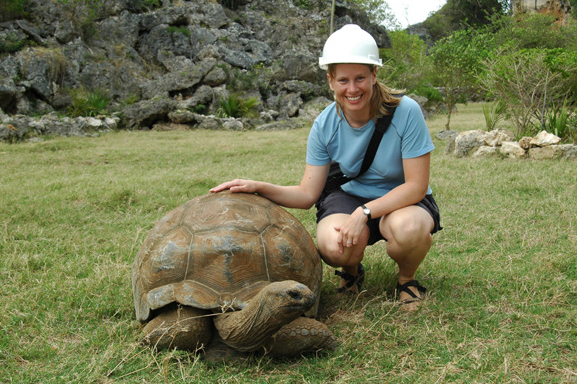By Lana and Tim Skeet
Scuba divers have their own bucket list. Whether it is pelagics, macro or wreck diving, these are deciding factors in their next destination. Here are three spectacular dive destinations, and what is amazing is that these also offer “topside” sights to see.

Chuuk Lagoon, Federated States of Micronesia
 Regarded as one of the premier wreck diving locations in the world, this is the site where the United States carried out Operation Hailstone against the Japanese Fourth Imperial Fleet. Over 250 aircraft and 45 ships were sunk. These included cruisers, destroyers, subchasers, tankers, and cargo-carrying supply ships.
Regarded as one of the premier wreck diving locations in the world, this is the site where the United States carried out Operation Hailstone against the Japanese Fourth Imperial Fleet. Over 250 aircraft and 45 ships were sunk. These included cruisers, destroyers, subchasers, tankers, and cargo-carrying supply ships.
Dive briefing?
Level: Advanced experience with wreck penetration and deep dive. AOW (Advanced Open Water). Sea temp is 29C/84F. Bottom time: 20-45 minutes. Mixed gas recommended.
When to go?
With year round tropical climate, any time is good but the dry months are from December to April.
How do I get there?
United Airlines’ “island hopper” connects Micronesia to Guam and Honolulu.
Where to stay?
Unless you are an avid diver staying on a liveaboard, most travelers base their stay at the Blue Lagoon Resort or the Truk Stop on the main island.
Topside things to do?
Fortified caves and tunnels dot every island. Organized tours are limited. Blue Lagoon has helped travelers hire guides for hikes to explore the WWII ruins including the Japanese Command Center on Fefen Island or military hospital on Tonoas Island.
Travelers can also arrange overnight stays on remote Jeep Island.
Important links:

Pulau Sipadan, Sabah
 Known as one of the greatest dive destinations in the world, this is the place to come to see tornadoes of barracuda and jackfish. White-tip and reef sharks, eagle rays and bumphead parrotfish circle this oceanic island. The island’s healthy coral provides a mating and nesting site for an unusually large number of green and hawksbill turtles, which gather there to mate and nest. Hammerhead and whale shark sightings are common.
Known as one of the greatest dive destinations in the world, this is the place to come to see tornadoes of barracuda and jackfish. White-tip and reef sharks, eagle rays and bumphead parrotfish circle this oceanic island. The island’s healthy coral provides a mating and nesting site for an unusually large number of green and hawksbill turtles, which gather there to mate and nest. Hammerhead and whale shark sightings are common.
Dive briefing?
Level: Intermediate to advanced. Experience with currents and buoyancy. AOW. Sea temp is 29C/84F. Bottom time: 40-60 minutes. Nitrox is good for most dives.
When to go?
The best time is during the more clement months between October and May.
How do I get there?
Flights to Tawau can be reached from Kota Kinabalu and Kuala Lumpur. One-hour shuttle to Semporna and 45-minute boat ride to Mabul.
Where to stay?
No accommodation on Sipadan. Most travelers stay on Mabul or Kapalai (20-minute boat ride to Sipad. Backpacker to 4* resorts are available. Borneo Divers (Mabul) had received the most permits in the past but this may have changed.
Topside things to do?
Plan to stay four nights to visit Sipadan at least once — only 176 permits (MYR 140 or $33USD) issued per day. Exploring the island is restricted by the military but snorkelers and birders will enjoy the day trip. Ask to see the protected turtle sanctuary.
Walk around Mabul in 20 minutes and see the sea gypsie (over 10,000 live here) in the “floating” villages who call this island home.
Important links:

Rodrigues
 Over 30 dive sites can be reached within 40 minutes by boat. Pristine hard coral formations attract good shoals of pelagic fish in the lagoon and outer reefs, including unicornfish, butterflyfish, giant travally and barracuda.
Over 30 dive sites can be reached within 40 minutes by boat. Pristine hard coral formations attract good shoals of pelagic fish in the lagoon and outer reefs, including unicornfish, butterflyfish, giant travally and barracuda.
Dive briefing?
Level: Intermediate experience with currents and passthroughs. AOW. Sea temp is 23C/73F (winter) – 28C/82F (summer). Bottom time: 45-minute recreational dives.
When to go?
Year-round tropical climate. The dry months are from May to December.
How do I get there?
Air Mauritius operates a 1 hour 40 minute flight daily up to 6 times a day and a cargo/passenger boat, The Mauritius Trochetia, departs from Port Louis for Rodrigues twice a month.
Where to stay?
Hotels are quaint with a limited number of rooms. These are usually ideally placed overlooking the lagoon with beach access. Airbnb is a great option, too.
Topside things to do?
The creole culture of the island is alive and everywhere. The food, which is much less spicy than that of Mauritius, gives pride to local products. The base is corn, which is gradually replacing rice. Try the lemons, green papaya salad, Eucalyptus honey or preserves. Also, try the salads and curries filled with octopus, an island specialty.
Visit the François Leguat reserve. It facilitated the reintroduction of giant tortoises in this beautiful protected area where more than a thousand tortoises live to 90! The museum traces the history of these animals. Caves are also on the site.
Important links:



